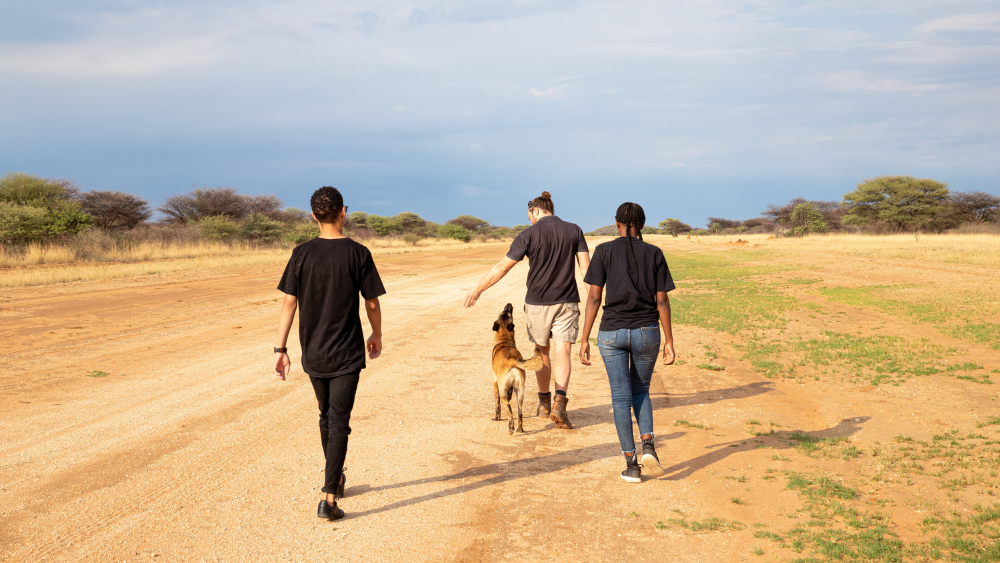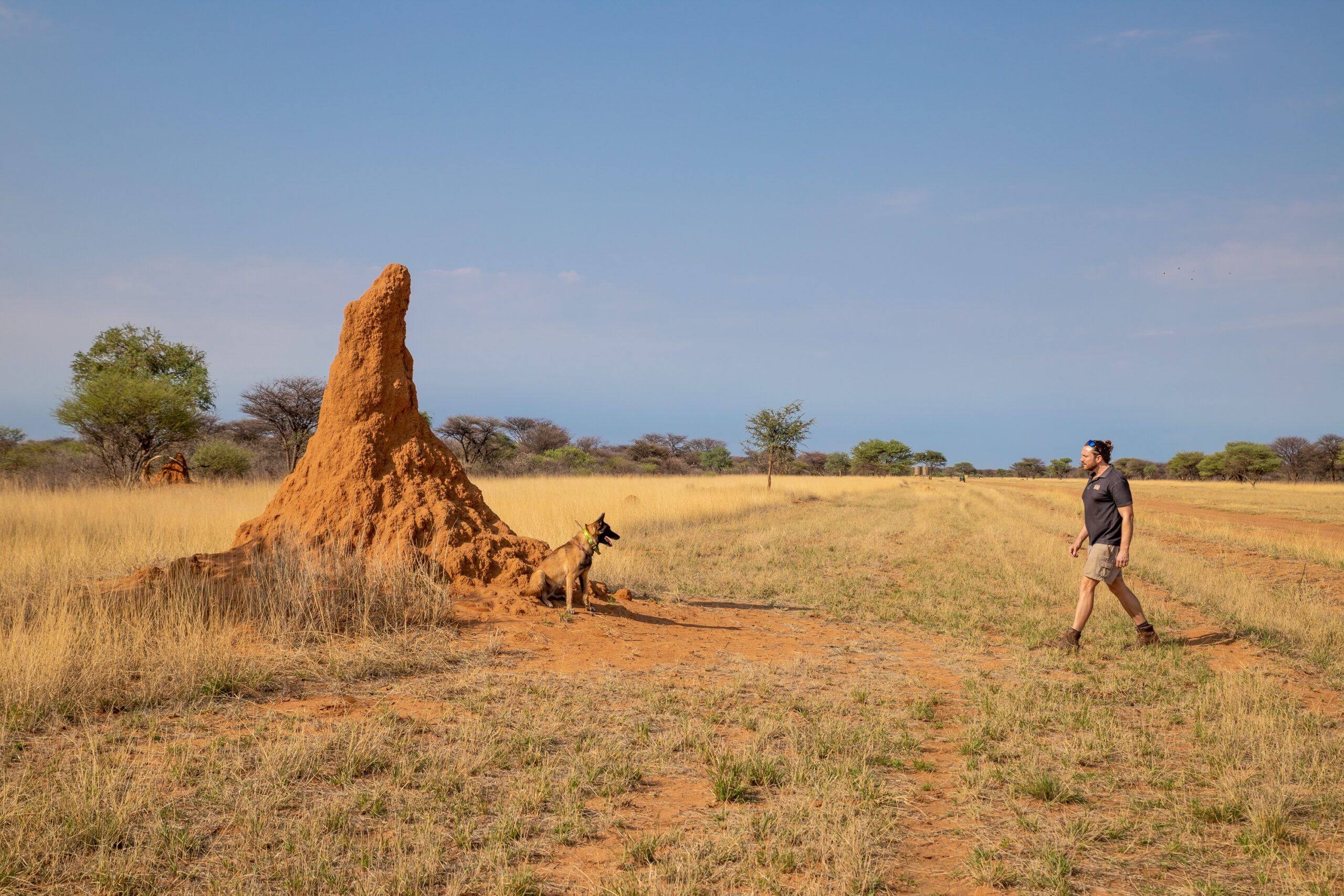How does CCF use scat dogs to track cheetahs in the wild?
-

- by Zila Oliveira 20 May 2024

Cheetahs, the epitome of speed and agility, roam the vast savannas with a grace that belies their predatory prowess. Yet, despite their majestic presence, these big cats are notoriously elusive, making them challenging to study and conserve. So, how do conservationists unravel the mysteries of these elusive felines in the wild?
Cheetahs boast one of the largest home ranges of any terrestrial animal, spanning up to an astonishing 2,000 square kilometres. This vast territory, coupled with their stealthy demeanour, poses a significant challenge for researchers aiming to monitor their populations and behaviours. However, understanding cheetah numbers and distribution is pivotal for devising effective conservation strategies to safeguard their future.
How scat detection dogs can help to track wild animals?
In the quest to track cheetahs and other wild animals, researchers have turned to an unlikely ally: man’s best friend. Canines, renowned for their acute sense of smell and exceptional trainability, have emerged as invaluable assets in the conservation arsenal. Dating back to the late 19th century, when dogs were employed to detect kakapos in New Zealand, these four-legged detectives have played a crucial role in wildlife monitoring.
With as many as 250 million olfactory receptors, dogs surpass humans by leaps and bounds in scent detection. Their remarkable olfactory acuity, coupled with rigorous training, enables them to sniff out cheetah scat with remarkable precision. In Namibia, scat detection dogs outperformed human trackers by a staggering margin, locating 93.3% of cheetah scat samples during a study conducted by Cheetah Conservation Fund researchers.

Empowering wildlife observers
Beyond canine assistance, empowering local communities is essential for effective conservation. In Somaliland, Wildlife Observers equipped with specialised skills for identifying cheetah tracks and scat play a pivotal role in monitoring these elusive cats. Thanks to initiatives funded by the European Union and the Taiwanese Government, these Wildlife Observers undergo comprehensive training, learning from resident cheetahs at the Cheetah Rescue and Conservation Centre (CRCC) in Geed-Feeble.
Armed with newfound knowledge and equipped with mobile devices and spatial monitoring tools, these Wildlife Observers patrol regional villages, documenting cheetah sightings and behaviours. Their efforts yield invaluable data, shedding light on cheetah population dynamics, distribution, and dietary preferences.

A beacon of hope for cheetah conservation
The collaboration between scat detection dogs, Wildlife Observers, and conservation organisations represents a beacon of hope for cheetah conservation. By harnessing the power of technology, community engagement, and interdisciplinary cooperation, researchers are inching closer to unravelling the enigmatic world of these magnificent predators.
As we continue to navigate the complexities of wildlife conservation, one thing remains clear: the fate of cheetahs lies in our collective efforts to protect and preserve their natural habitats. Through innovative tracking techniques and community-driven initiatives, we can pave the way for a brighter future where cheetahs roam free across the African savannas.
If you want to get to know more about CCF’s Scat Detection Team, click here.
Your donation enables us to conduct vital scientific and field research, deepening our understanding of the myriad threats facing cheetahs and developing effective strategies to keep tracking the cheetahs. Join us in our mission by donating today.
Related Reading



